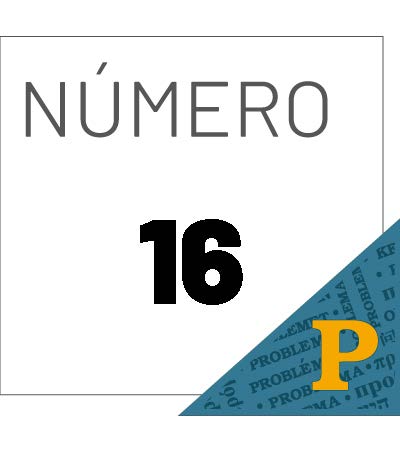Perspectiva neurocientífica de la agencia: ¿es problemática para el derecho?
La agencia moral kantiana ha sido la base teórica para los fundamentos morales y jurídicos de la autonomía de la voluntad. Sin embargo, las neurociencias han demostrado que la agencia racional kantiana resulta un traje de difícil calce para el sujeto contemporáneo, de modo que la evidencia nos hace cuestionarnos acerca de sus repercusiones en el ámbito del derecho. Este trabajo trata en primer lugar de constatar las diferencias existentes entre la agencia kantiana y aquella que muestran los estudios neurocientíficos, y, en segundo lugar, reflexionar si esta disonancia pudiera ser problemática para el derecho, y las razones esgrimidas para ello.
Detalles del artículo
Uso de licencias Creative Commons (CC)
Todos los textos publicados por Problema. Anuario de Filosofía y Teoría del Derecho sin excepción, se distribuyen amparados con la licencia CC BY-NC 4.0 Internacional, que permite a terceros utilizar lo publicado, siempre que mencionen la autoría del trabajo y la primera publicación en esta revista. No se permite utilizar el material con fines comerciales.
Derechos de autoras o autores
De acuerdo con la legislación vigente de derechos de autor Problema. Anuario de Filosofía y Teoría del Derecho reconoce y respeta el derecho moral de las autoras o autores, así como la titularidad del derecho patrimonial, el cual será transferido —de forma no exclusiva— a Problema para permitir su difusión legal en acceso abierto.
Autoras o autores pueden realizar otros acuerdos contractuales independientes y adicionales para la distribución no exclusiva de la versión del artículo publicado en Problema. Anuario de Filosofía y Teoría del Derecho (por ejemplo, incluirlo en un repositorio institucional o darlo a conocer en otros medios en papel o electrónicos), siempre que se indique clara y explícitamente que el trabajo se publicó por primera vez en Problema.
Para todo lo anterior, deben remitir la carta de transmisión de derechos patrimoniales de la primera publicación, debidamente requisitada y firmada por las autoras o autores. Este formato debe ser remitido en PDF a través de la plataforma OJS.
Derechos de lectoras o lectores
Con base en los principios de acceso abierto las lectoras o lectores de la revista tienen derecho a la libre lectura, impresión y distribución de los contenidos de Problema por cualquier medio, de manera inmediata a la publicación en línea de los contenidos. El único requisito para esto es que siempre se indique clara y explícitamente que el trabajo se publicó por primera vez en Problema. Anuario de Filosofía y Teoría del Derecho y se cite de manera correcta la fuente incluyendo el DOI correspondiente.
Citas
Anscombe, G. (1957), Intention, Basil Blackwell.
Arpaly, N. (2004), Unprincipled Virtue: An Inquiry into Moral Agency, Oxford University Press.
Brembs, B. (2011), “Towards a scientific concept of free will as a biological trait: spontaneous actions and decision-making in invertebrates. Proceedings of the Royal Society B”, Biological Sciences, vol. 1, núm. 10.
Cáceres, E y Montemayor, C. (2019), “Agency and Legal Responsibility: Epistemic and Moral Considerations”, Problema, núm. 13.
Caruso, G. (2015), “Free Will Eliminativism: Reference, Error, and Phenomenology”, Philosophical Studies, vol. 172, núm. 10.
Churchland, P. (2006), “The Big Questions: Do we have Free will?”, The New Scientist, November, núm. 18.
Churchland, P. (2017), “The Brains Behind Morality”, Cerebrum, October.
Cornejo Plaza, M. I. y Lolas Stepke, F. (2016), “Discapacidad, vulnerabilidad e investigación en psiquiatría. Aspectos éticos y jurídicos”, Jurisprudencia Argentina, núm. 18.
Cornejo Plaza, M. I. y Escorza Pavéz, D. (2014), Concepto jurídico de persona en los pacientes en estado vegetativo permanente. Análisis legislativo, doctrinario y jurisprudencial, Académica Española.
Cortina, A. (2010) “Neuroética: ¿las bases cerebrales de una ética universal con relevancia política?”, Isegoría, núm. 42.
Curry, O. et al. (2019), “Is it Good to Cooperate? Testing the Theory of Morality as Cooperation in 60 Societies”, Current Anthropology, vol. 60, núm. 1.
Damasio, A. (2004), El error de Descartes. La emoción, la razón y el cerebro humano, trad. de J. de Ros, Crítica.
Davidson, D. (1980), Essays on Actions and Events, Clarendon Press.
Dennett, D. (1992), La libertad de acción, Gedisa.
Díaz, J. L. (1979), “Un enfoque sistémico de la relación mente-cerebro: hacia una reconciliación del determinismo y el libre albedrío”, en Fernández-Guardiola, A. (ed.), La conciencia, Trillas.
Evers, K. (2010), Neuroética. Cuando la materia se despierta, Katz.
Gazzaniga, M. (2000), “Cerebral Specialization and Interhemispheric Communication: does the Corpus Callosum enable the Human Condition?”, Brain, vol. 7, núm. 123).
Gazzaniga, M. (2007), “My Brain Made me do it”, en Glannon, W., Defining Right and wrong in Brain Science, Dana Press.
Glannon, W. (2007), Defining Right and wrong in Brain Science: Essential Reading in Neuroethics, Dana Press.
Glannon, W. (2011), Brain, Body and Mind. Neuroethics with a Human Face, Oxford University Press.
González Lagier, D. (2014), “Entre razones y causas. Sobre la relación entre las emociones y las acciones y sus implicaciones para la responsabilidad”, en Papayannis, Diego (coord.), Causalidad y atribución de responsabilidad, Marcial Pons.
González Lagier, D. (2009), Emociones, responsabilidad y derecho, Marcial Pons.
Greene, J. (2015), “The Raise of Moral Cognition”, Cognition, núm. 135.
Haidt, J. (2001), “The Emotional dog and its Rational Tail: A Social Intuitionist Approach To Moral Judgment”, Psychological Review, vol. 108, núm. 4.
Haidt, J. (2003), “The Moral Emotions”, en Davison, R. J. et al., Handbook of Affective Sciences, Oxford University Press.
Williams, J. (1956), The will to Believe and Other Essays in Popular Philosophy, Dover.
Jaspers, K. (1963), Psicopatología general, Beta.
Kane, R. (1996), The Significance of Free Will, Oxford University Press.
Kane, R. (2011) The Oxford Handbook of Free Will, Oxford University Press.
Kant, I. (1943), “Principios metafísicos del derecho”, América.
Kant, I. (1996), Fundamentación de la metafísica de las costumbres, Ariel.
Kant, I. (2002), Crítica de la razón práctica, Alianza.
Kant, I. (2013), ¿Qué es la Ilustración?, trad. y ed. de Roberto R. Aramayo, Alianza.
Kohlberg, L. (1969), “Stage and Sequence: The Cognitive Development Approach To Socialization”, en Goslin, D. A. (ed.), Handbook of Socialization Theory, Rand McNally.
Kohlberg, L. (1984), The Psychology of Moral Development: The Nature and Validity of Moral Stage, Harper y Raw.
Leary, D. (2020), “William James and British Thought: then and Now”, BJPsych Bulletin, núm. 44.
Lolas Stepke, F. y Cornejo Plaza, M. I. (2017), “Neuroética, neurociencias y derecho. Culturas epistémicas y comunidades de práctica”, Jurisprudencia Argentina, núm. 29.
Martínez, R. (1996), “Leibniz y la ciencia jurídica”, Anales de Derecho, núm. 4.
Monasterio Astobiza, A. (2019), “Ética para máquinas. Similitudes y diferencias entre la moral artificial y la moral humana”, en Toboso, Mario, Aparicio, Manuel y López, Daniel, debate “Ética, robótica y tecnología asistencial”, Dilemata, núm. 30.
Nucci, L. P. y Turiel, E. (1978), “Social Interactions and the Deve-lopment of Social Concepts in Pre-School Children”, Child Development, núm. 49.
Pérez Zafrilla, P. (2013), “Implicaciones normativas de la psicología moral: Jonathan Haidt y el desconcierto moral”, Revista Internacional de Filosofía, núm. 59.
Piaget, J. (1932), The Moral Judgment of the Child, The Free Press.
Ruhl, N. (2009), Neuroética y responsabilidad. Una discusión sobre el libre albedrío y el determinismo neuronal, Facultad de Ciencias Médicas de la Universidad Nacional de Cuyo.
Satinover, J. (2002), The Quantum Brain: The Search for Freedom and the Next Generation of Man, Wiley.
Siu, C. y Murphy, K. (2018), “The Development of Human Visual Cortex and Clinical Implications”, Eye Brain, vol. 24, núm. 10.
Schlosser, M. (2019), “Agency”, en Zalta, Edward N. (ed.), The Stanford Encyclopedia of Philosophy, disponible en: https://plato.stanford.edu/archives/win2019/entries/agency/.
Solomon, R. (2007), Ética emocional. Una teoría de los sentimientos, Paidós.
Taylor, C. (1997), Argumentos filosóficos, Paidós.
Walter, H. (2001), The Neurophilosophy of Free Will, The MIT Press.
Østby et al. (2009), “Heterogeneity in Subcortical Brain Development: A Structural Magnetic Resonance Imaging Study of Brain Maturation from 8 to 30 Years”, Journal of Neuroscience, vol. 29, núm. 38.




























